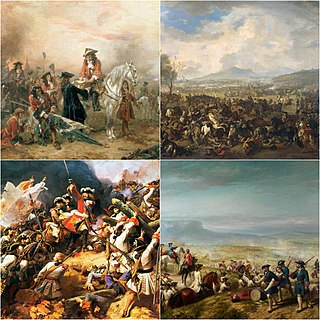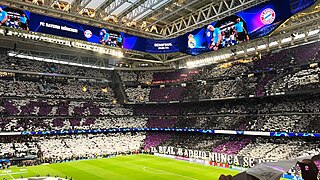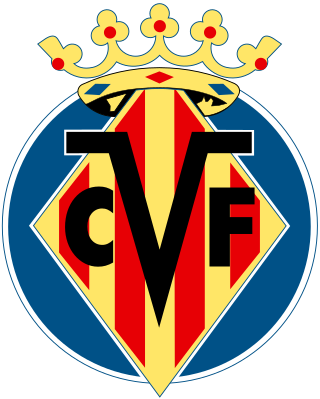
Francisco Franco Bahamonde was a Spanish military general who led the Nationalist forces in overthrowing the Second Spanish Republic during the Spanish Civil War and thereafter ruled over Spain from 1939 to 1975 as a dictator, assuming the title Caudillo. This period in Spanish history, from the Nationalist victory to Franco's death, is commonly known as Francoist Spain or as the Francoist dictatorship.

The Pyrenees are a mountain range straddling the border of France and Spain. They extend nearly 500 km (310 mi) from their union with the Cantabrian Mountains to Cap de Creus on the Mediterranean coast, reaching a maximum altitude of 3,404 metres (11,168 ft) at the peak of Aneto.

Spain, formally the Kingdom of Spain, is a country in southwestern Europe. It is the largest country in Southern Europe and the fourth-most populous European Union member state. Spanning across the majority of the Iberian Peninsula, its territory also includes the Canary Islands in the Atlantic Ocean, the Balearic Islands in the Mediterranean Sea, and the autonomous cities of Ceuta and Melilla in Africa. Peninsular Spain is bordered to the north by France, Andorra, and the Bay of Biscay; to the east and south by the Mediterranean Sea and Gibraltar; and to the west by Portugal and the Atlantic Ocean. Spain's capital and largest city is Madrid, and other major urban areas include Barcelona, Valencia, and Zaragoza.

The Strait of Gibraltar is a narrow strait that connects the Atlantic Ocean to the Mediterranean Sea and separates Europe from Africa. The two continents are separated by 13 kilometres of ocean at the Strait's narrowest point between Punta de Tarifa in Spain and Point Cires in Morocco. Ferries cross between the two continents every day in as little as 35 minutes. The Strait's depth ranges between 300 and 900 metres.

The Alhambra is a palace and fortress complex located in Granada, Andalusia, Spain. It is one of the most famous monuments of Islamic architecture and one of the best-preserved palaces of the historic Islamic world, in addition to containing notable examples of Spanish Renaissance architecture.

The Virgin Islands are an archipelago in the Caribbean Sea. They are geologically and biogeographically the easternmost part of the Greater Antilles, While the British Virgin Islands are officially designated as “The Virgin Islands”, the name is most often used to refer to the entire international grouping of the British and United States Virgin Islands together with the Spanish Virgin Islands, which, contrary to their name are in fact officially part of the Commonwealth of Puerto Rico, itself an unincorporated territory of the United States. Geographically, the northern islands lie along the Puerto Rico Trench. St. Croix is a displaced part of that same geologic structure. Politically, the British Virgin Islands have been governed as the western island group of the Leeward Islands, which are the northern part of the Lesser Antilles, and form the border between the Caribbean Sea and the Atlantic Ocean. The archipelago is separated from the true Lesser Antilles by the Anegada Passage and from the main island of Puerto Rico by the Virgin Passage.

Western Sahara is a disputed territory in North-western Africa. It has a surface area of 272,000 square kilometres (105,000 sq mi). Approximately 30% of the territory is controlled by the Sahrawi Arab Democratic Republic (SADR); the remaining 70% is occupied and administered by neighboring Morocco. It is the most sparsely populated country in Africa and the second most sparsely populated country in the world, mainly consisting of desert flatlands. The population is estimated at 618,600. Nearly 40% of that population lives in Morocco-controlled Laayoune, the largest city of Western Sahara.

The War of the Spanish Succession was a European great power conflict fought between 1701 and 1714. The immediate cause was the death of the childless Charles II of Spain in November 1700, which led to a struggle for control of the Spanish Empire among supporters of the claimant Bourbon and Habsburg dynasties. His official heir was Philip of Anjou, a grandson of Louis XIV of France, whose main backers were France and most of Spain. His rival, Archduke Charles of Austria, was supported by the Grand Alliance, whose primary members included Austria, the Dutch Republic, and Great Britain. Significant related conflicts include the 1700 to 1721 Great Northern War, and Queen Anne's War in North America.

Santiago Bernabéu Stadium is a football stadium in Madrid, Spain. With a seating capacity of 80,000, the stadium has the second-largest seating capacity for a football stadium in Spain. It has been the home stadium of Real Madrid since its completion in 1947.

The Spain national football team has represented Spain in men's international football competitions since 1920. It is governed by the Royal Spanish Football Federation, the governing body for football in Spain.

The Peru national football team, nicknamed La Blanquirroja, represents Peru in men's international football. The national team has been organised, since 1927, by the Peruvian Football Federation (FPF). The FPF constitutes one of the ten members of FIFA's South American Football Confederation (CONMEBOL). Peru has won the Copa América twice, and has qualified for the FIFA World Cup five times ; the team also participated in the 1936 Olympic football competition and has reached the semi-finals of the CONCACAF Gold Cup. The team plays most of its home matches at the Estadio Nacional in Lima, the country's capital.

Club Atlético Osasuna, or simply Osasuna, is a Spanish professional football club in Pamplona, Navarre. Founded on 24 October 1920, the club currently plays in La Liga, holding home games at the 23,516-capacity El Sadar Stadium. The team's regular home kit is a red shirt with navy blue shorts. Osasuna is one of four professional La Liga clubs to be owned by its members with an elected president.

Club Deportivo Tenerife, S.A.D. is a Spanish football club based in Santa Cruz de Tenerife, Tenerife, in the Canary Islands. Founded in 1922, the club plays in the Segunda División, holding home matches at the Estadio Heliodoro Rodríguez López, with a 22,824-seat capacity. The traditional home colours are white shirts and blue shorts.

During World War II, the Spanish State under Francisco Franco espoused neutrality as its official wartime policy. This neutrality wavered at times, and "strict neutrality" gave way to "non-belligerence" after the Fall of France in June 1940. Franco wrote to Adolf Hitler offering to join the war on 19 June 1940 in exchange for help building Spain's colonial empire. Later in the same year Franco met with Hitler in Hendaye to discuss Spain's possible accession to the Axis Powers. The meeting went nowhere, but Franco did help the Axis—whose members Italy and Germany had supported him during the Spanish Civil War (1936–1939)—in various ways.

The Spain national rugby union team, nicknamed Los Leones, represents the Spanish Rugby Federation in men's international rugby union competitions. The team annually takes part in the European Nations Cup, the highest European rugby championship outside the Six Nations. The national side is ranked 20th in the world.

Villarreal Club de Fútbol "B" is a Spanish football team based in Villarreal, in the autonomous community of Valencia. Founded in 1999, it is the reserve team of Villarreal CF and plays in Primera Federación – Group 2, holding home games at Estadio de la Cerámica, with a 23,008-seat capacity.

The Spanish Civil War was a military conflict fought from 1936 to 1939 between the Republicans and the Nationalists. Republicans were loyal to the left-leaning Popular Front government of the Second Spanish Republic, and consisted of various socialist, communist, separatist, anarchist, and republican parties, some of which had opposed the government in the pre-war period. The opposing Nationalists were an alliance of Falangists, monarchists, conservatives, and traditionalists led by a military junta among whom General Francisco Franco quickly achieved a preponderant role. Due to the international political climate at the time, the war had many facets and was variously viewed as class struggle, a religious struggle, a struggle between dictatorship and republican democracy, between revolution and counterrevolution, and between fascism and communism. According to Claude Bowers, U.S. ambassador to Spain during the war, it was the "dress rehearsal" for World War II. The Nationalists won the war, which ended in early 1939, and ruled Spain until Franco's death in November 1975.

The Spanish American wars of independence took place throughout Spanish America during the early 19th century, with the aim of political independence from Spanish rule. Struggles for sovereignty in both hemispheres began shortly after the outbreak of the Peninsular War as a front in the larger Napoleonic Wars, between royalists who favored a unitary monarchy, and patriots who favored either plural monarchies or republics. Thus, the strict period of military campaigns would go from the Battle of Chacaltaya (1809), in present-day Bolivia, to the Battle of Tampico (1829) in Mexico.

Port and starboard are nautical terms for watercraft, aircraft and spacecraft, referring respectively to the left and right sides of the vessel, when aboard and facing the bow (front).

The Gibraltar–Spain border is the international boundary between the British Overseas Territory of Gibraltar and the Kingdom of Spain. It is also referred to as "The Fence of Gibraltar" or simply "The Fence".























